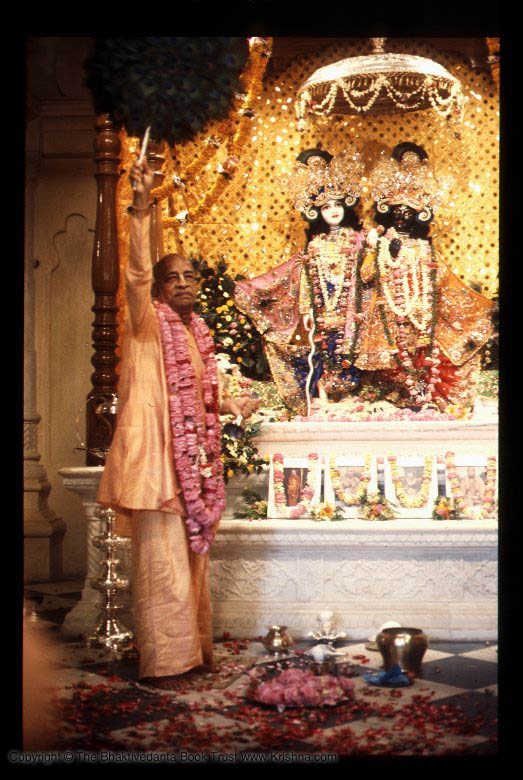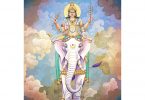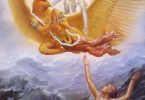Question : When we do arati why do we offer incense, lamp, water, kerchief, flowers, chamara, and peacock fan. What do these offerings signify?
Answer by Romapada Swami :
Arati is an offering of respect, welcome to an exalted personality, such as a king or a brahmana. Since the greatest exalted person is the Supreme Lord, it is most appropriate to offer arati to Him.
The Hari-bhakti-vilasa, a guide book for devotees written by Sanatana Goswami, says that the articles of arati represent the material elements in their pure form and correspond to the sense objects. In other words the arati articles are satisfying to the senses and represent the offering of the elements in the Lord’s creation back to the Lord for His satisfaction.
a- The conch shell blown at the beginning and end of the arati, drives away inauspicious elements.
b- The sound of the bell is dear to the Lord and embodies all music.
c- Flowers and incense provide beautiful aromas for the Lord’s pleasure.
d- The ghee lamp represents lighting someone’s way.
e- Offering water in the conch shell represents offering arghya. (Arghya is a mixture of auspicious items offered above or touched to the head of an honored guest as part of a reception. It is a way to welcome the Lord and make Him feel at home.)
f- The handkerchief represents offering new cloth.
g- The yak tail chamara and the peacock fan are both aspects of kingly service. The chamara is an emblem of royalty, keeping flies away while the peacock fan provides a cooling breeze.
h- Music. Arati must be accompanied by the singing of the Hare Krsn mantra. Srila Prabhupada taught that chanting is the most important part of deity worship.







